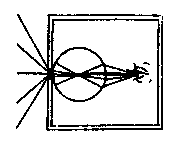 CHArt
CHArt  CHArt
CHArt Computers and the History of Art - 1999 Conference Paper Abstract
One of the major obstacles to research into the development of medieval architectural moulding profile forms, has been the difficulty associated with the acquisition of complicated 2D cross sectional data from 3D features of varying scale. Problems of time and accessibility have hampered the comprehensive harvesting of mouldings data, and the different manual methods traditionally used have produced results of inconsistent accuracy.
As part of a broader project currently being jointly undertaken by the departments of Computer Science and History of Art in Trinity College Dublin, an automated means of acquiring architectural moulding profiles has been developed. The prototype system, which utilises non-contact laser triangulation, has been designed specifically for use in the medieval architectural environment.
The ultimate goal of the project - to create a standardised profile matching database of Irish medieval mouldings (c.1130-c.1600) - has been the guide to design, and has taken concerns, such as the need for contact-free operation, weatherproofing, weight and versatility into account.
This paper explores the benefits, and drawbacks of using the system in practical situations, and its potential contribution to research in the field of medieval architecture.